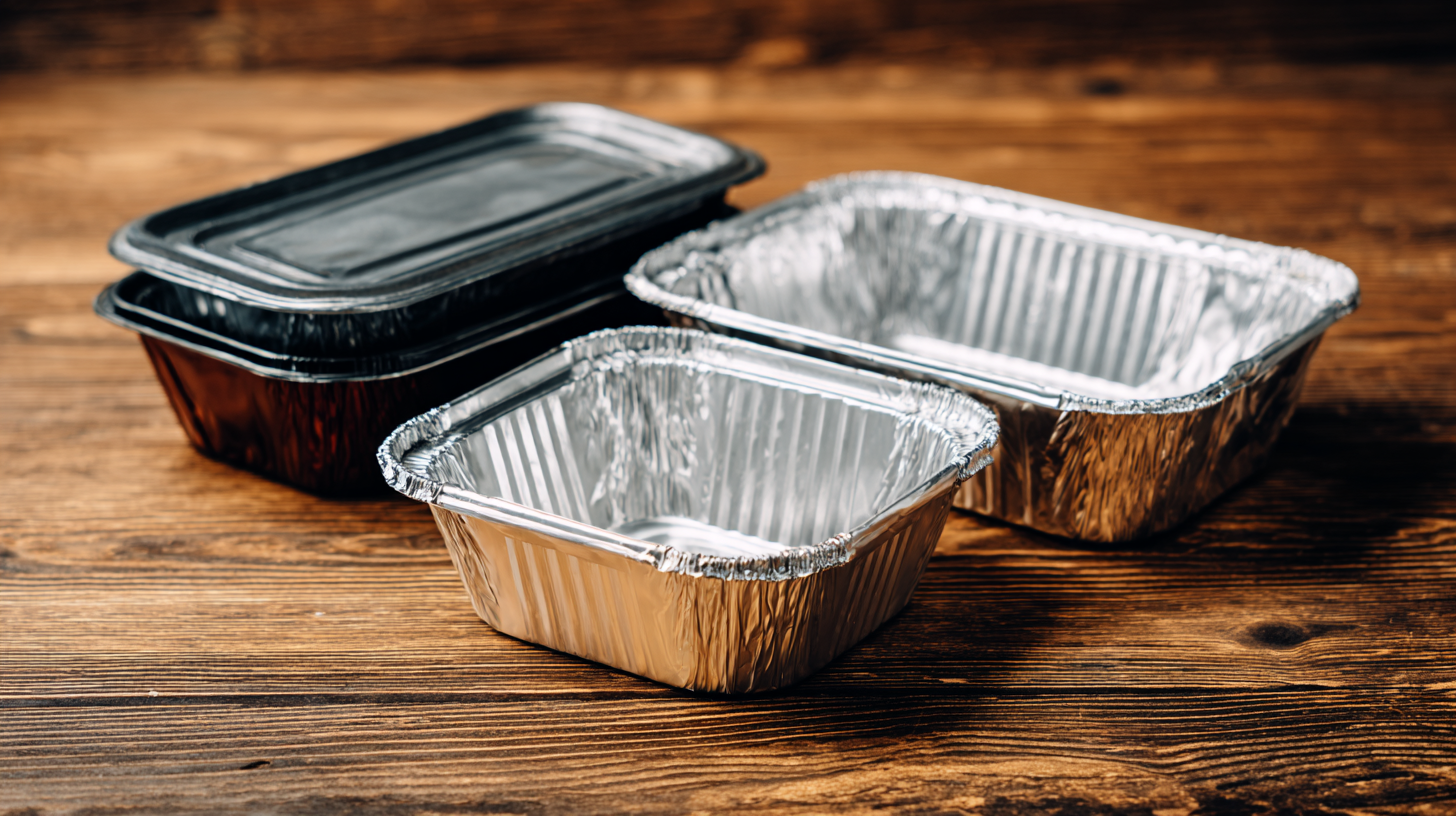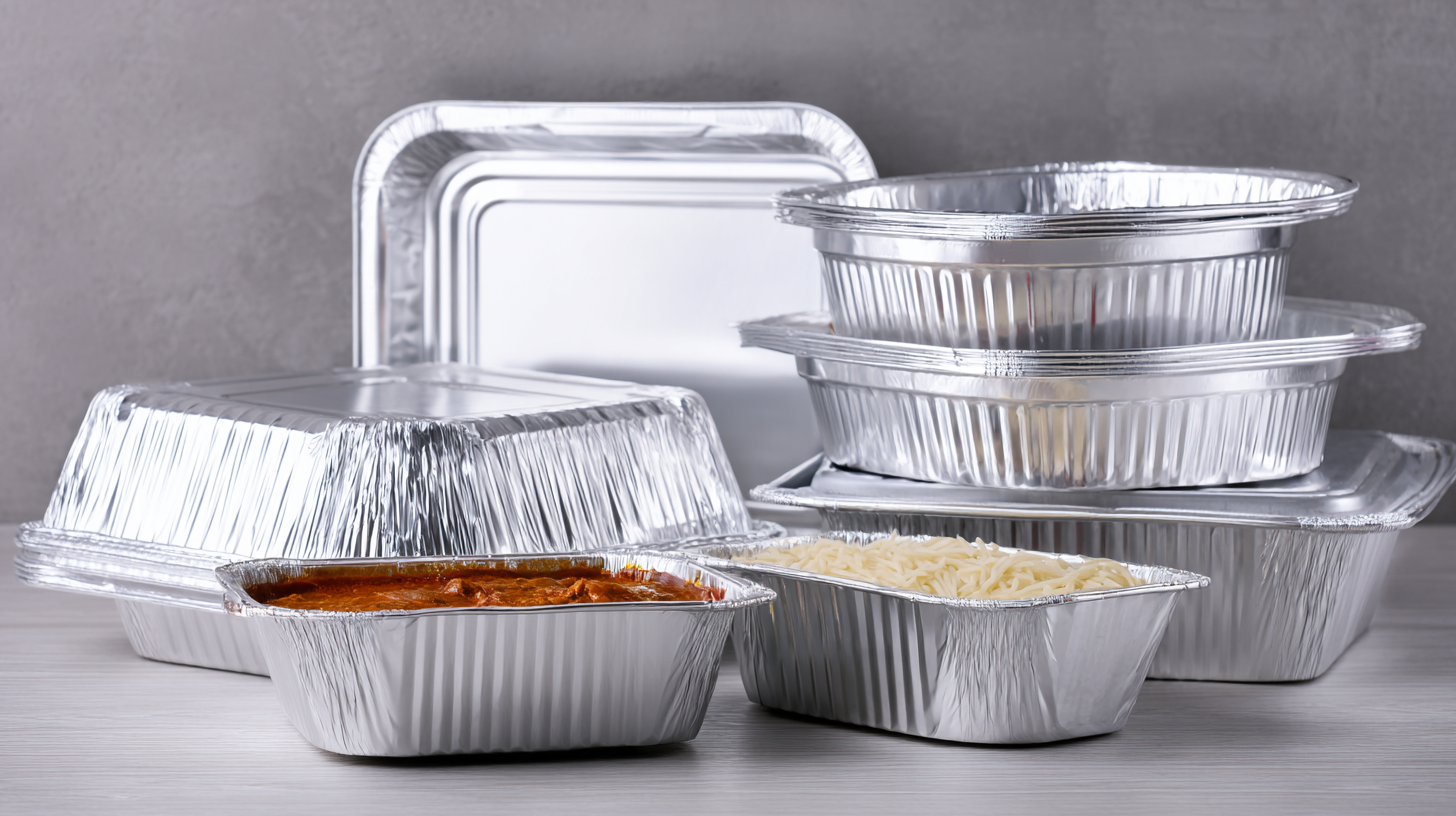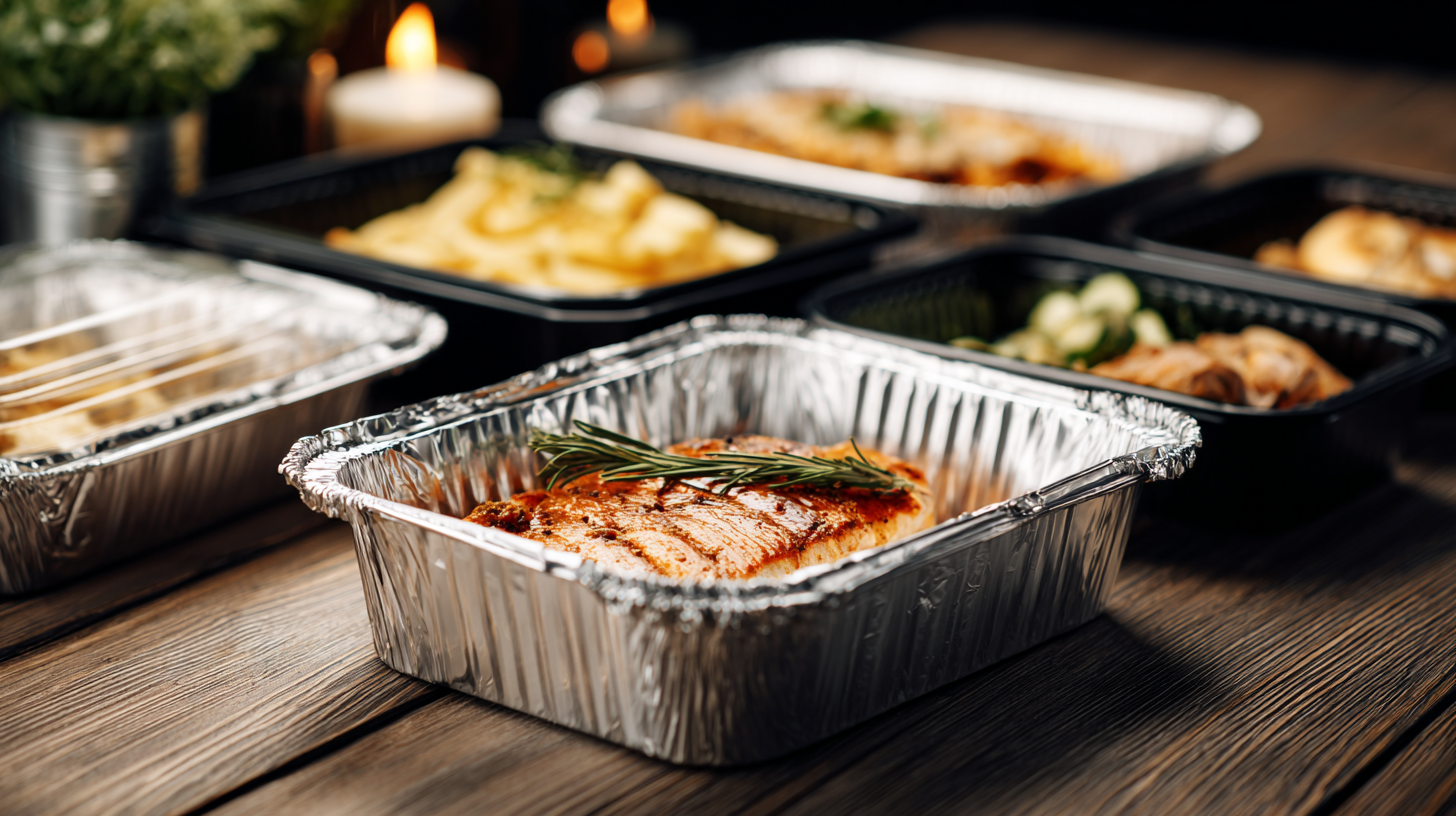How to Choose the Right Foil Container for Your Food Packaging Needs
Choosing the right foil container for your food packaging needs can significantly impact the quality, safety, and presentation of your culinary creations. With an array of options available on the market, understanding the specific attributes of foil containers is crucial for both home cooks and professionals alike. These containers are not only lightweight and flexible but also possess excellent heat retention and resistance properties, making them ideal for a variety of food applications, from baking to takeout. In this guide, we will explore the essential factors to consider when selecting foil containers, including size, shape, and durability, ensuring that you make an informed decision that meets your packaging requirements. Whether you need containers for meal prep, catering, or simply storing leftovers, this comprehensive overview will help you navigate the choices and find the perfect foil container for your needs.

Understanding the Different Types of Foil Containers for Food Packaging
When it comes to food packaging, selecting the right foil container is essential for maintaining food quality and safety. There are several types of foil containers available, each designed for specific purposes. For instance,
deep foil pans are excellent for baking and roasting, providing even heat distribution and easy release of food. These containers are particularly useful for casseroles, lasagnas, and other baked dishes, as they can withstand high temperatures and retain moisture.
On the other hand, shallow foil trays are ideal for serving and storing food items that do not require extensive cooking. These are commonly used for takeaway meals and picnics, as they are easy to transport and dispose of. Additionally, there are
divided foil containers, which are perfect for meal prep or a variety of dishes in one package, allowing for better portion control. Understanding the differences among these containers will help you make an informed choice based on your specific food packaging needs, ensuring freshness and convenience for your culinary creations.
Key Considerations for Selecting Foil Containers Based on Food Type and Storage Needs
When selecting foil containers for food packaging, it is essential to consider the specific type of food you are storing. For instance, research indicates that approximately 30% of food waste is due to improper packaging, highlighting the importance of using appropriate materials. Foil containers are available in various shapes and sizes, which can accommodate everything from delicate pastries to hearty stews. According to the Aluminum Association, the reflective properties of aluminum foil not only enhance food preservation but also minimize temperature fluctuations, making them ideal for meals that require longer storage periods in the fridge or freezer.

Moreover, it’s crucial to assess the storage needs associated with your food products. Data from the Food and Agriculture Organization suggests that maintaining the right packaging can prolong the shelf life of food by up to 50%. For cold or hot items, look for containers designed with temperature resistance in mind, as this can directly impact food safety and quality. While some foil containers are single-use, many are designed for multiple uses and can be reused without compromising integrity, which makes them more economical and environmentally friendly. Understanding your food's unique requirements plays a key role in ensuring optimal packaging solutions.
Analyzing the Environmental Impact of Foil Containers in Food Packaging
The environmental impact of foil containers in food packaging is a critical consideration in today's sustainability-driven world. Foil containers, commonly used for their convenience and heat resistance, come with significant ecological concerns. While aluminum is a recyclable material, the energy consumption required for its production is high, contributing to substantial carbon emissions. Furthermore, if not properly recycled, these containers can end up in landfills, where they take decades to decompose.
Moreover, the production process of aluminum foil relies on mining bauxite, which can lead to habitat destruction and pollution. This extraction process not only affects local ecosystems but also contributes to greenhouse gas emissions. To mitigate these impacts, consumers and businesses can opt for foil containers made from post-consumer recycled aluminum, which reduces the demand for new materials and lowers energy consumption. By aligning food packaging choices with environmentally responsible practices, stakeholders can help lessen the negative footprint of foil containers in the food industry while still benefiting from their practical advantages.
Environmental Impact of Foil Containers in Food Packaging
Evaluating Cost-Effectiveness: Pricing Trends in Foil Container Materials
When selecting foil containers for food packaging, understanding pricing trends in foil container materials is crucial for evaluating cost-effectiveness. According to a recent report by Smithers Pira, the global market for aluminum foil packaging is projected to reach $48.1 billion by 2025, driven by the increasing demand for sustainable and lightweight packaging options. With the prices of aluminum fluctuating due to global market conditions, it’s essential for businesses to remain informed about these trends in order to manage their packaging costs effectively.
Recent data indicates that the average price of aluminum containers has risen by approximately 5% annually, attributed to increased production costs and supply chain challenges. However, the competitive landscape in the foil container market offers opportunities for cost savings. Companies that invest in technology to enhance production efficiency can help offset rising material costs. Additionally, sourcing containers that utilize recycled aluminum can provide significant savings while also appealing to environmentally-conscious consumers, thus aligning with the industry's shift towards sustainability. An analysis from Freedonia Group emphasizes that businesses should consider both immediate costs and long-term benefits when choosing foil packaging solutions, ensuring both economic viability and environmental responsibility.
How to Choose the Right Foil Container for Your Food Packaging Needs - Evaluating Cost-Effectiveness: Pricing Trends in Foil Container Materials
| Container Type | Material | Average Price per Unit | Capacity (ml) | Recyclability |
|---|---|---|---|---|
| Aluminum Foil Pan | Aluminum | $0.25 | 500 | Yes |
| Round Foil Container | Aluminum | $0.30 | 300 | Yes |
| Heavy-Duty Foil Tray | Aluminum | $0.50 | 1000 | Yes |
| Foil Wrap | Aluminum | $0.05 | N/A | Yes |
| Takeout Foil Containers | Metal | $0.40 | 750 | Yes |
Recognizing Regulatory Standards for Food Safety in Foil Packaging Products
When selecting foil containers for food packaging, it’s crucial to recognize the regulatory standards that ensure food safety. Different regions have specific guidelines that manufacturers must adhere to when producing foil packaging products. For example, in the United States, the Food and Drug Administration (FDA) sets regulations concerning materials that can safely come into contact with food. These regulations ensure that the containers do not leach harmful substances into the food, which is vital for consumer health.

Additionally, compliance with international safety standards, such as those set by the European Food Safety Authority (EFSA), is essential for businesses looking to market their products globally. These standards cover various aspects of food contact materials, including the composition, migration limits, and overall safety assessments. By paying close attention to these regulatory standards, manufacturers can choose foil containers that not only meet legal requirements but also provide peace of mind to consumers seeking safe, high-quality food packaging solutions.
